Wildebeest Migration
The annual movement of blue wildebeest, zebra and other antelope across the borders of Kenya and Tanzania is, without doubt, one of Africa’s most breathtaking spectacles. The search for food and water results in a clockwise migration through the Serengeti National Park and the Masai Mara National Reserve. In the region of 1.2 million wildebeest make this 1800 mile (2880 Km) circuit every year losing some 250 000 of their travelling “beests” along the way.
Wildebeest young are all born during a three week period (an estimated 400,000 each year), and they are able to run alongside their mothers shortly after birth. This overwhelming supply of potential prey means higher numbers of predators in the Parks and you can generally see a healthy number of lions, leopards, hyenas, crocodiles and vultures during the time the wildebeest pass through.
Started in the Sixties
One of the most fascinating facts I came across is that this natural phenomenon only started in the 1960s and there seems to be no scientific reason for the migration, except for a possible change in rainfall patterns. Personally, I believe that this ‘clown of the grasslands’ never needed a reason other than the love of running, leaping and clowning around. One animal decided to go for a walk and the others followed….
Should they ever decide to stop walking, or migrate to another area, the spectacle will move or cease to exist and life in the Mara will drastically change. Not only for the natural life cycles of the resident predators but for the human subjects that make their own personal annual migration to watch them walk.
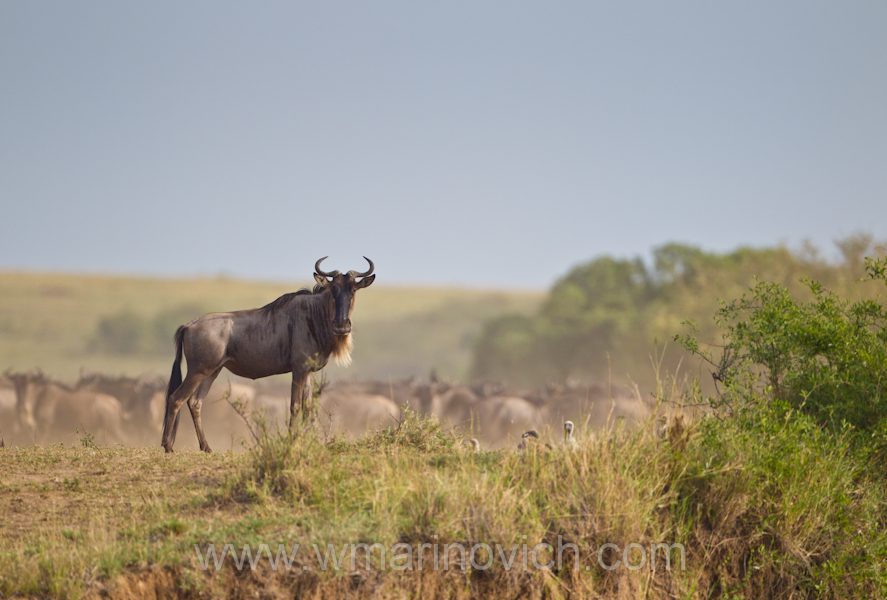
Blue Wildebeest
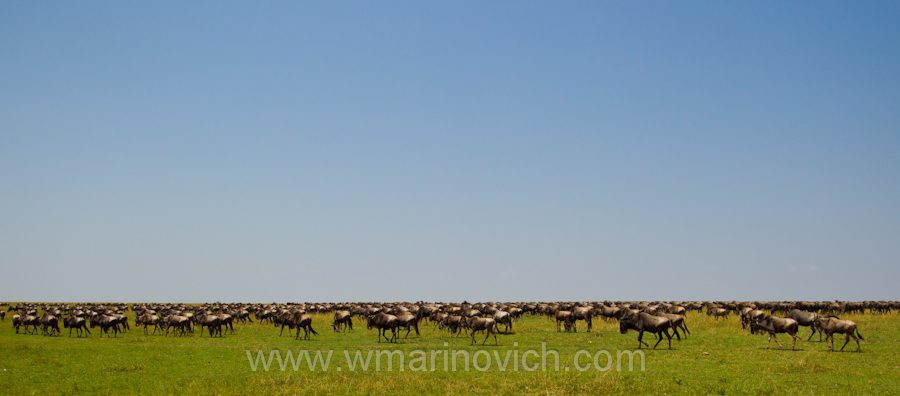
Wildscape
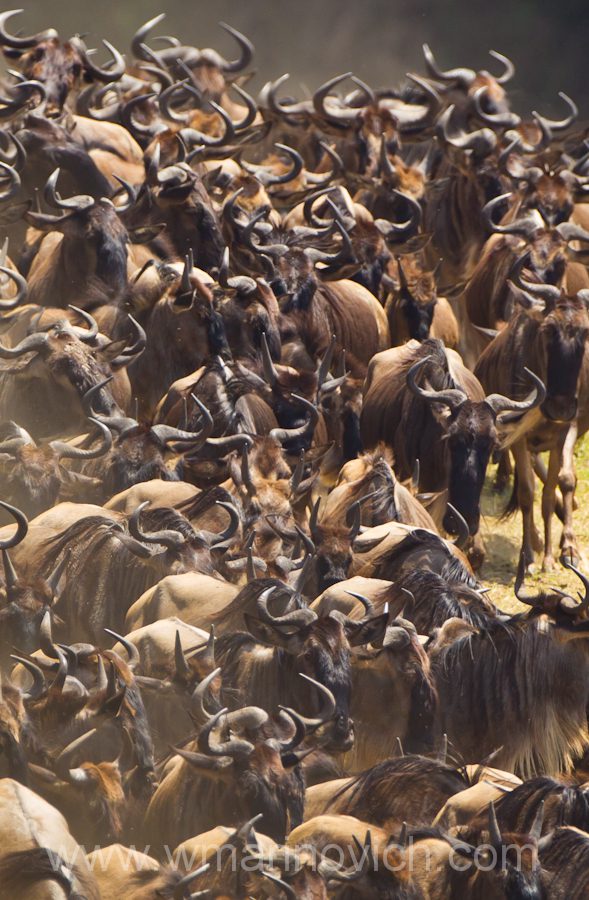
Mass of bodies
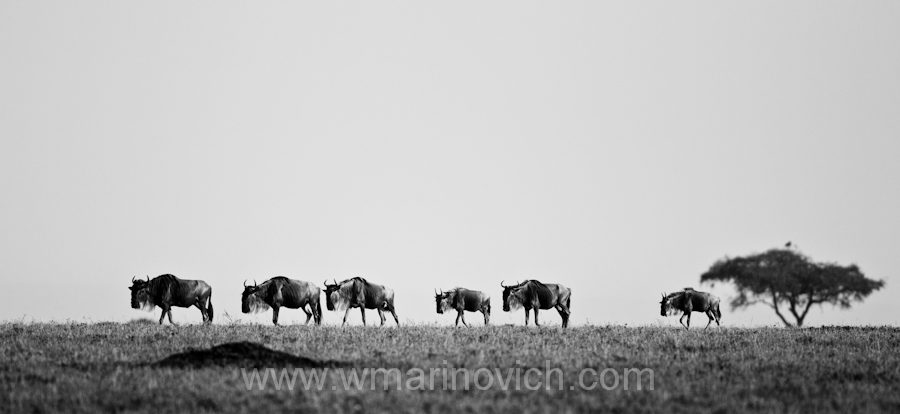
Follow
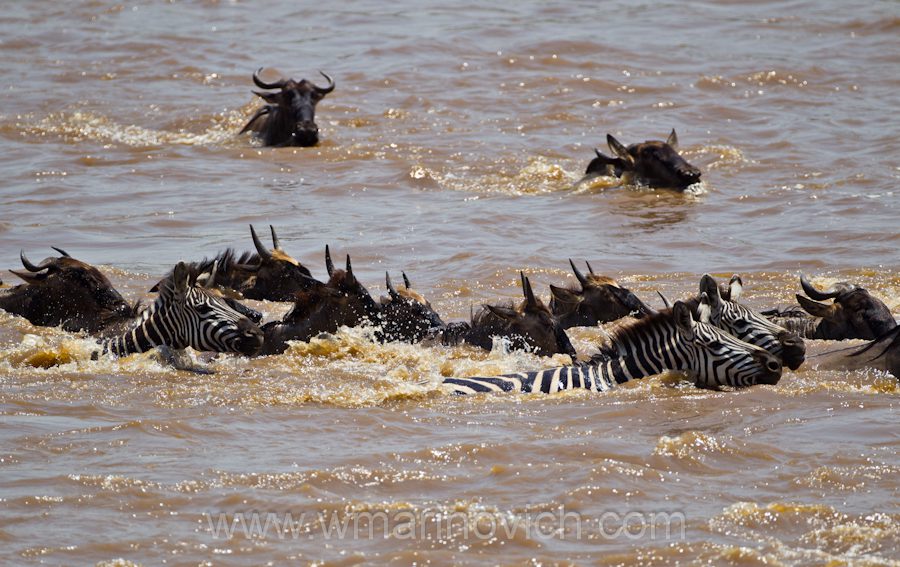
Crossing
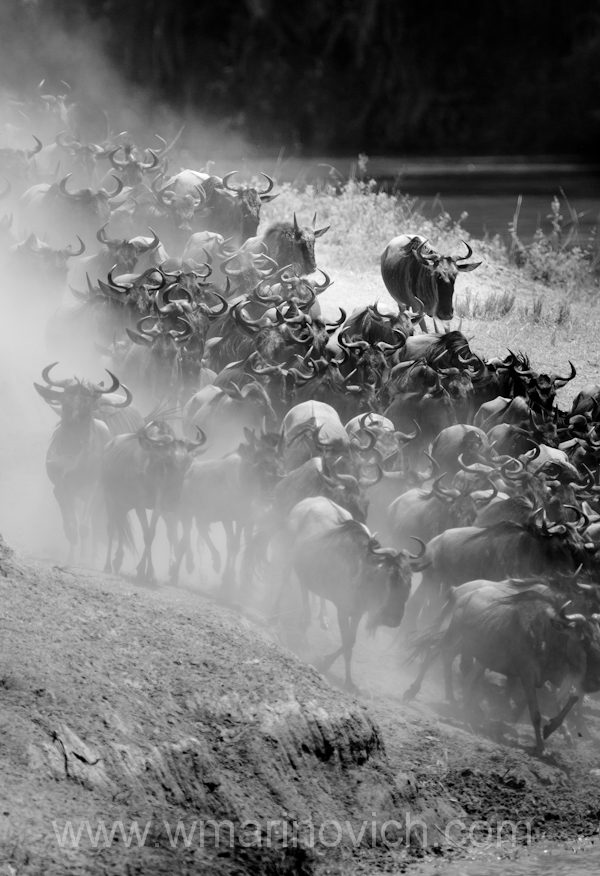
Dust crossing
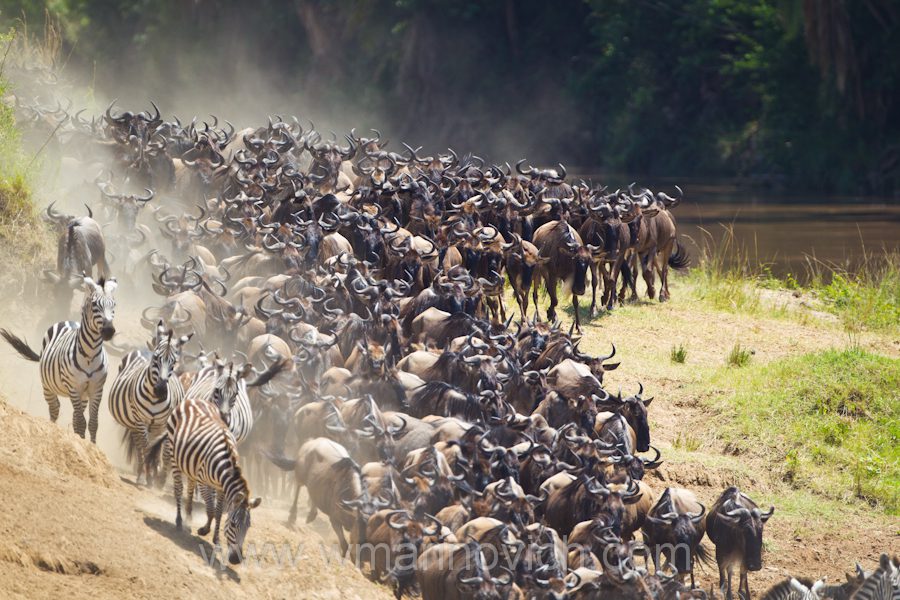
and they just kept coming
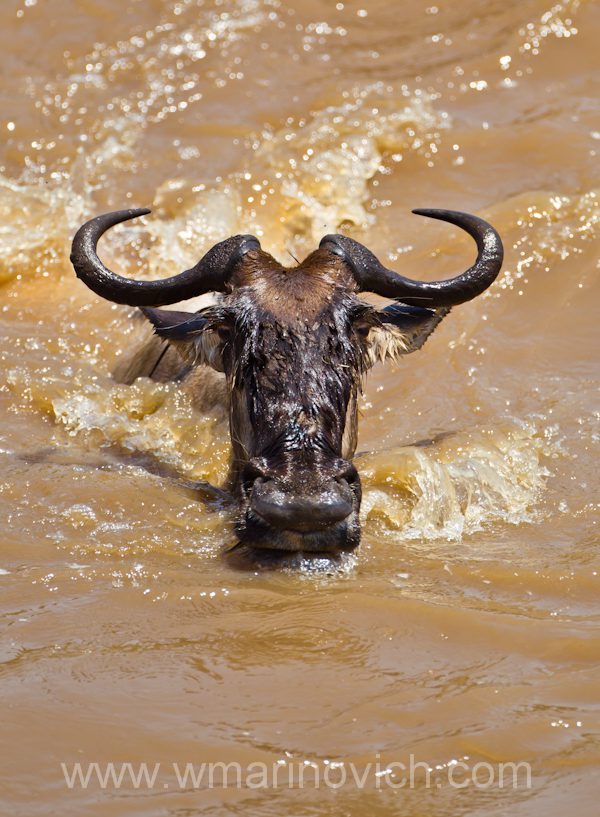
Lone wildebeest
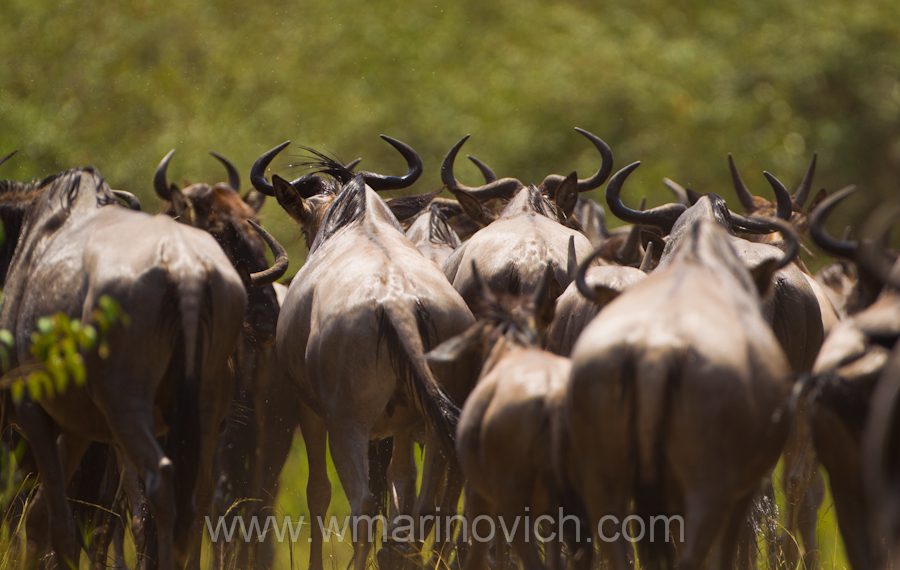
Crossing survivors
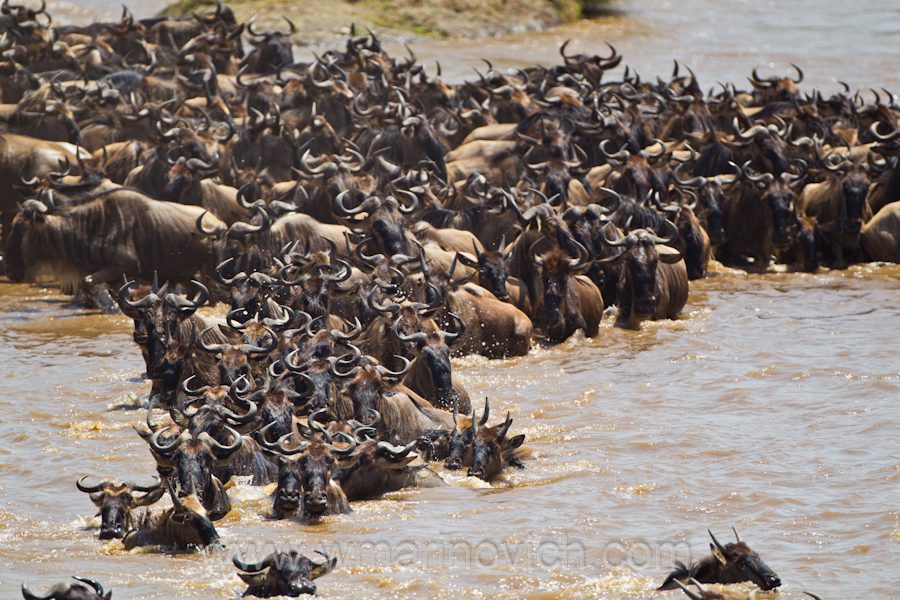
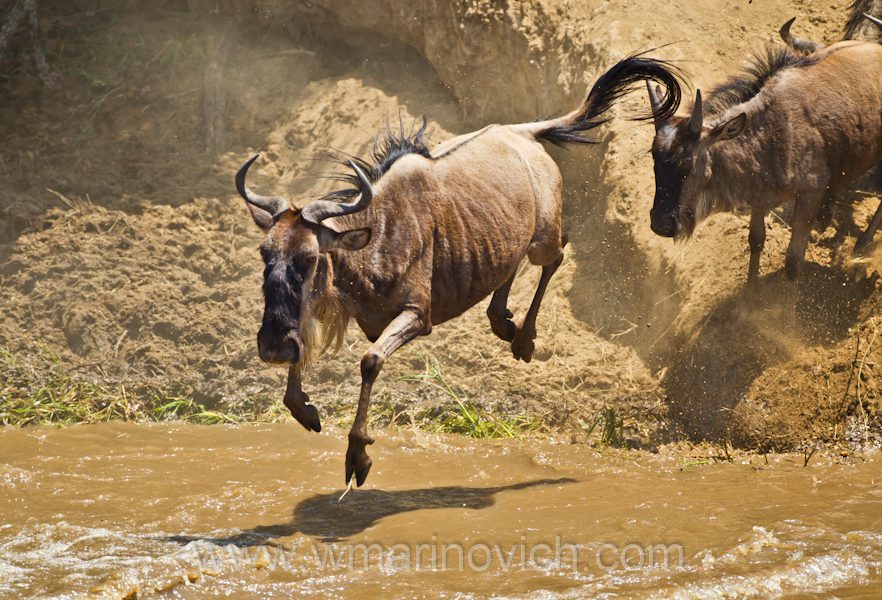
Leap of faith
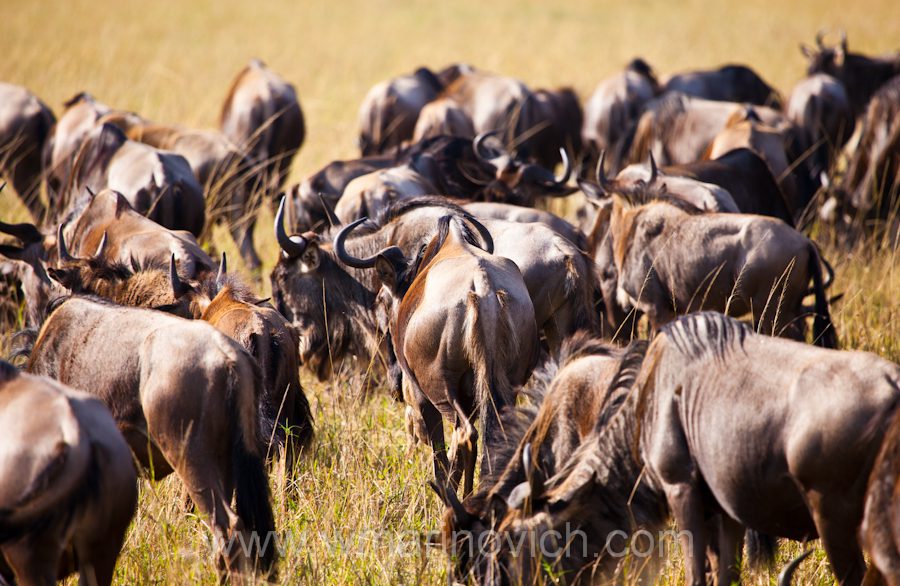
Greener grass
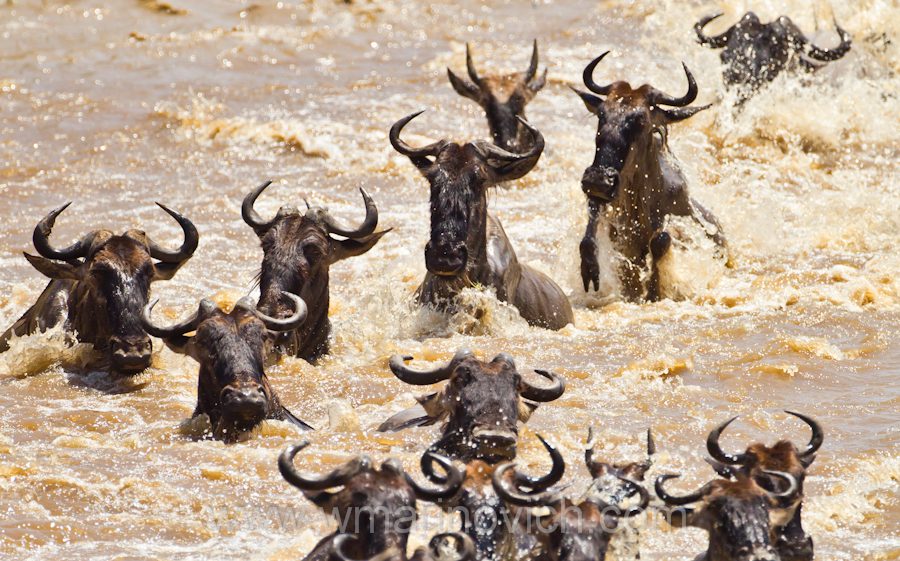
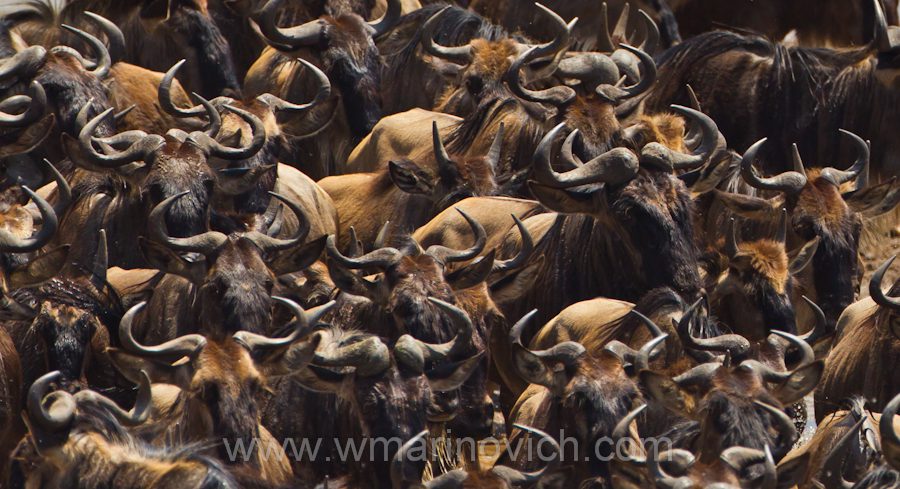
Horn and hoof
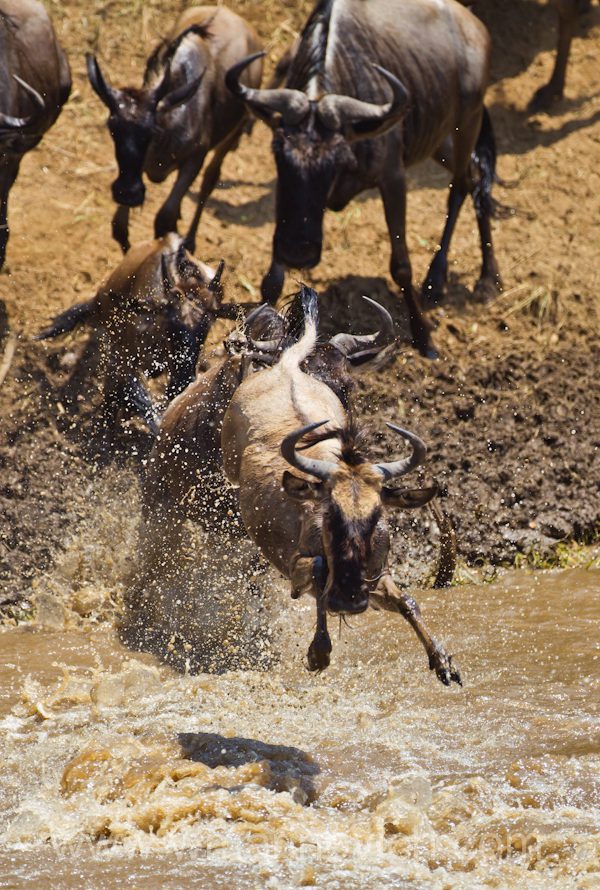
young one
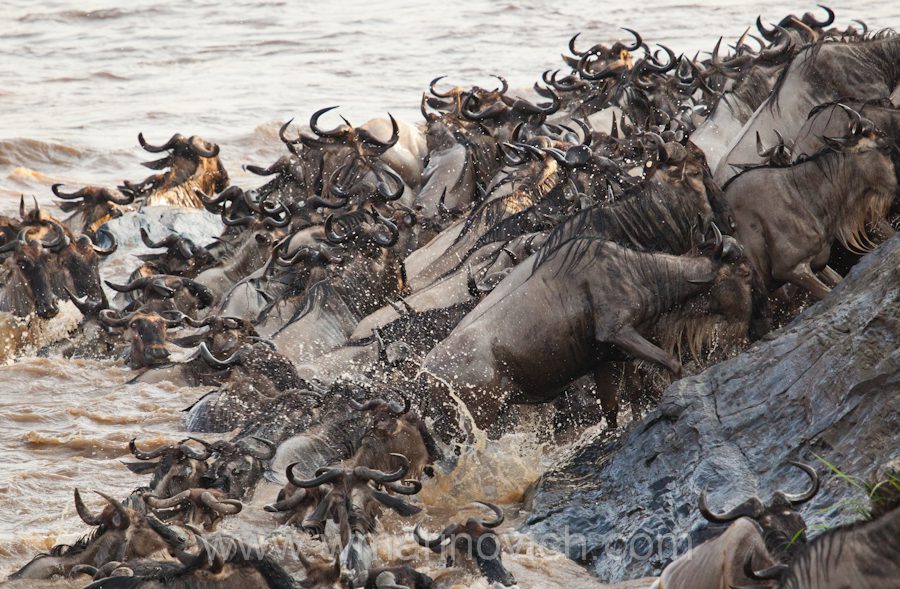
Slippery ascent
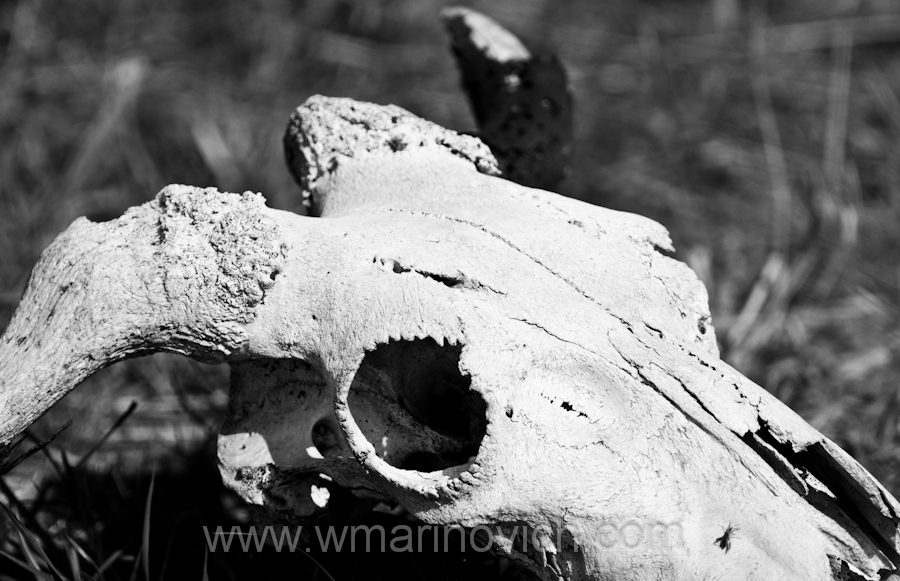
Not all make it
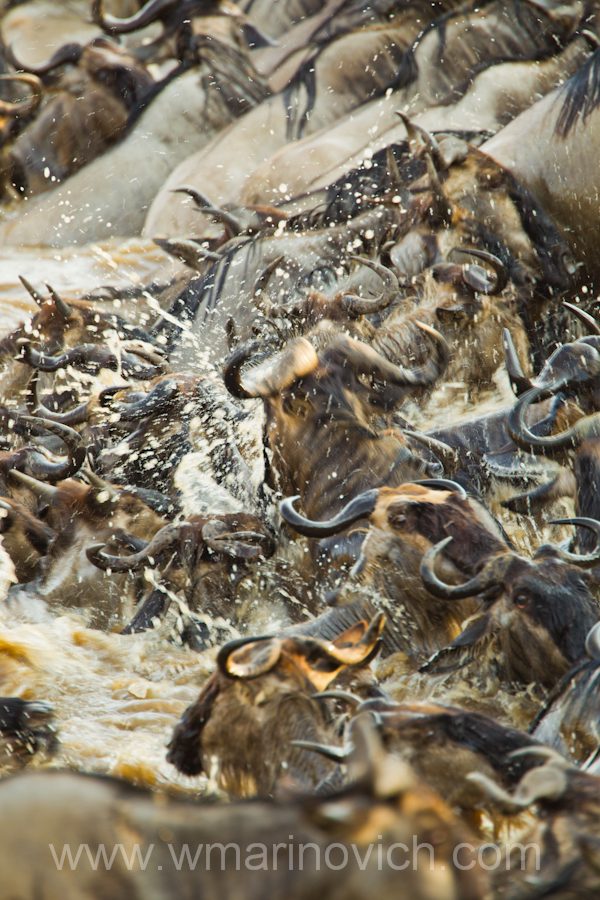
Frenzy
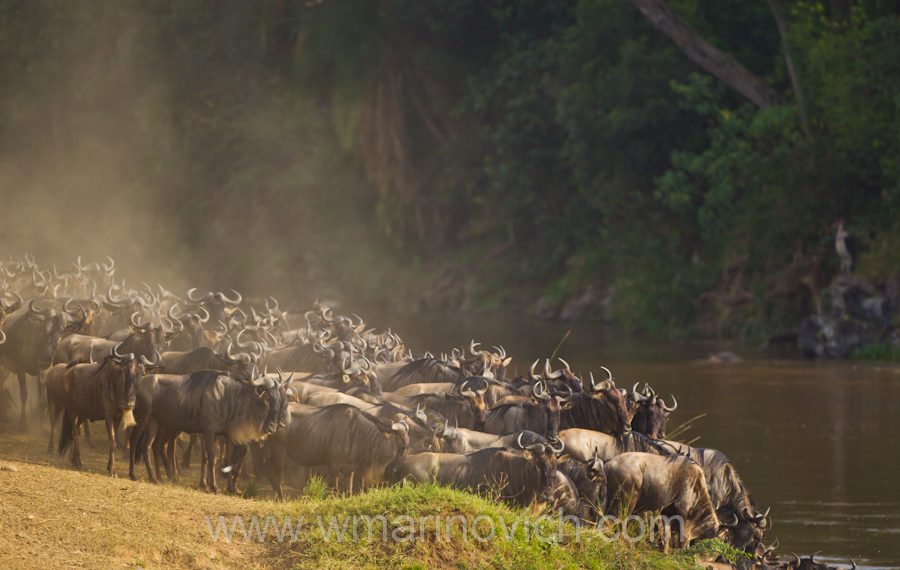
Morning crossing
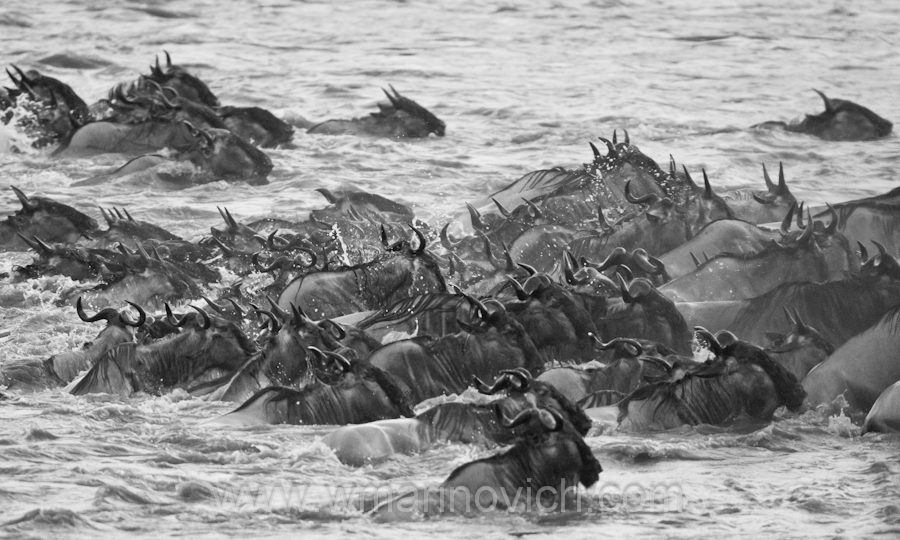
Black and white crossing
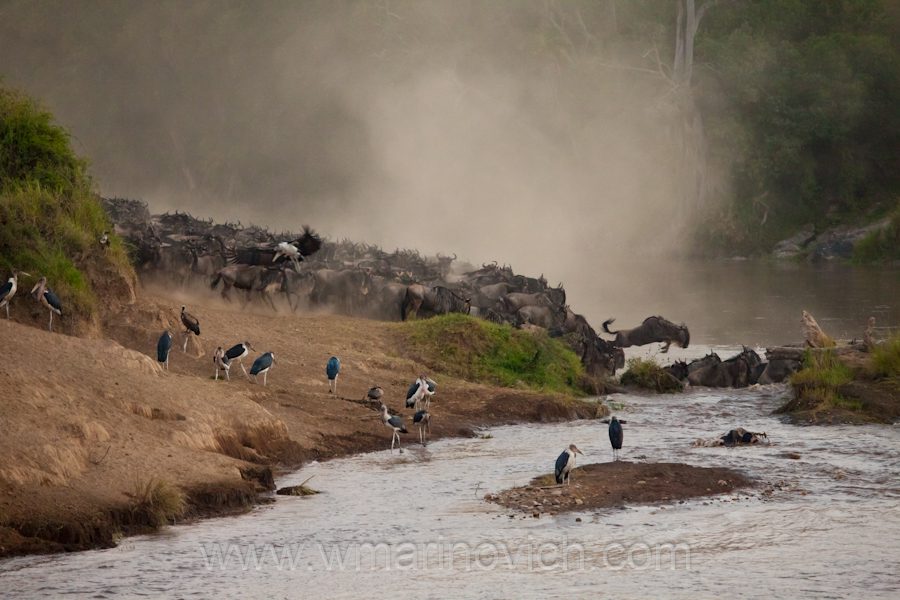
Waiting storks
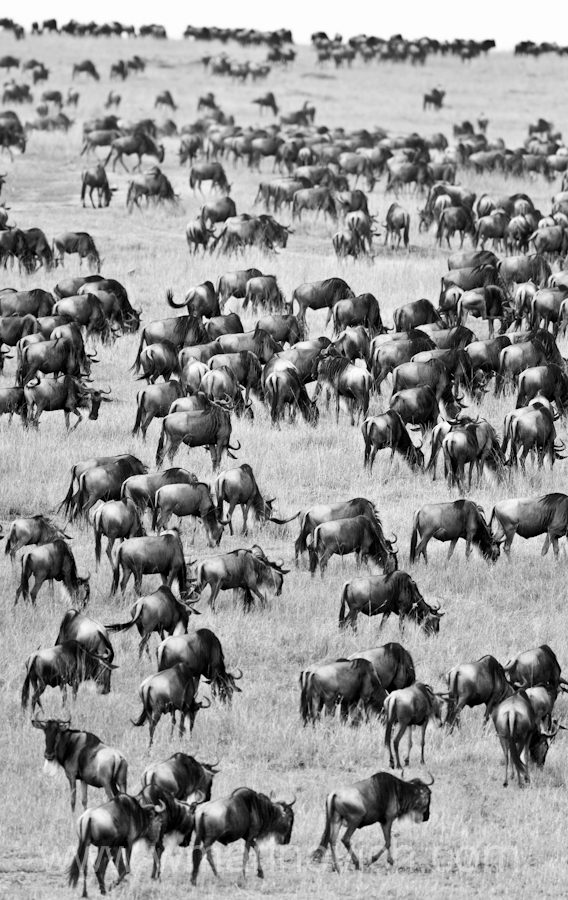
Made it
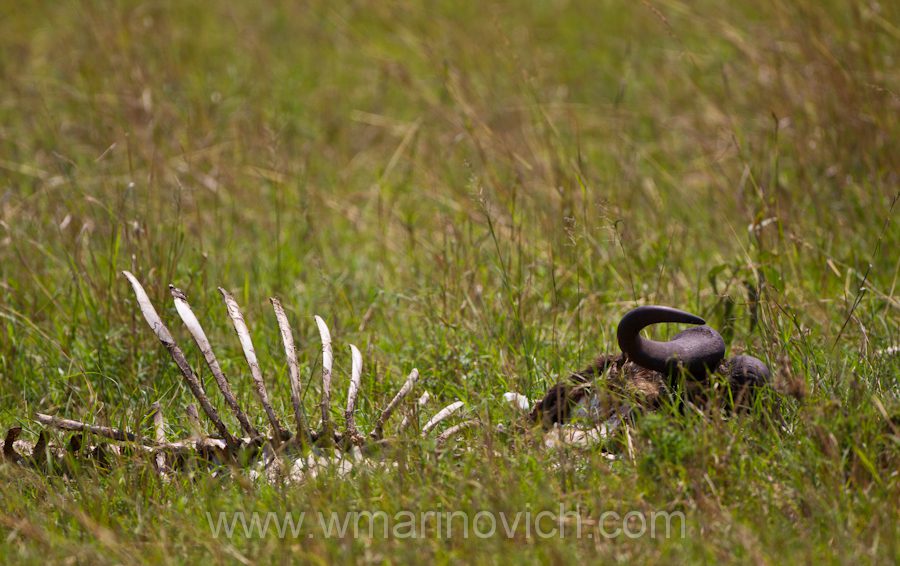
Star of the show
Species Details
Kingdom: Animalia
Phylum: Chordata
Subphylum: Vertebrata
Class: Mammalia
Order: Artiodactyla
Family: Bovidae
Subfamily: Alcelaphinae
Genus: Connochaetes
Species : Connochaetes taurinus – blue wildebeest
The name “Blue Wildebeest” derives from a very blue sheen to its short-haired hide, differentiating this species from the plainer black genus member Black Wildebeest. The name “gnu” originates from the Khoikhoi name for these animals, “gnou”. The Blue Wildebeest is sometimes called Brindled Gnu. The (plural of Wildebeest is denoted as Wildebeest, Wildebeests or Wilderbai). Other common terms include gnu ( /nuː/or /njuː/) and nyumbu (Swahili).
All Reference material and information gathered from the public domain.
To read more photographic stories, see my latest photos, benefit from print giveaways and free gifts

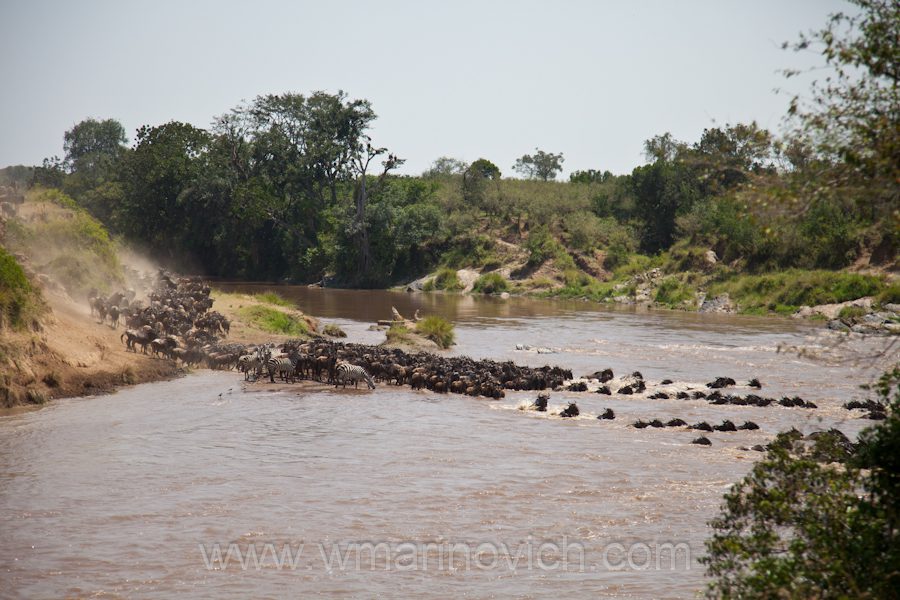









Gr8 work. The angles of ur shots are amazing!!!
Fantastic post with great insight into the migration. Really love the textures in the black & white shots, gorgeous.
Outstanding Wayne, so like the marabou storks and the slippery rock, that where we saw a croc catch one
[…] I got the chance to photograph my first migration when I joined a David Lloyd photo tour in August of this year. Being my first visit to the Mara, I arrived with high expectations and was simply blown away. The vastness of the Mara is only surpassed by the sheer number of Wildebeest that swarm the grassland during this time (see my blog on the Wildebeest) […]
So I gather October is the sweet spot for the migration in the Masai Mara? I have Alaska this year and will likely only do Africa once so I am thrilled to have someone like you that I can ask questions of. All your images are fantastic but the migration images are beyond words….well done Wayne.
Lovely tribute, bru. Some interesting images of an animal that is difficult to make look interesting 🙂
Thanks Morkel. It is difficult to get new and different views of these animals. We will just keep trying
[…] I got the chance to photograph my first migration when I joined a David Lloyd photo tour in August. Being my first visit to the Mara, I arrived with high expectations and was simply blown away. The vastness of the Mara is only surpassed by the sheer number of wildebeest that swarm the grassland during this time (see my blog on the Wildebeest) […]